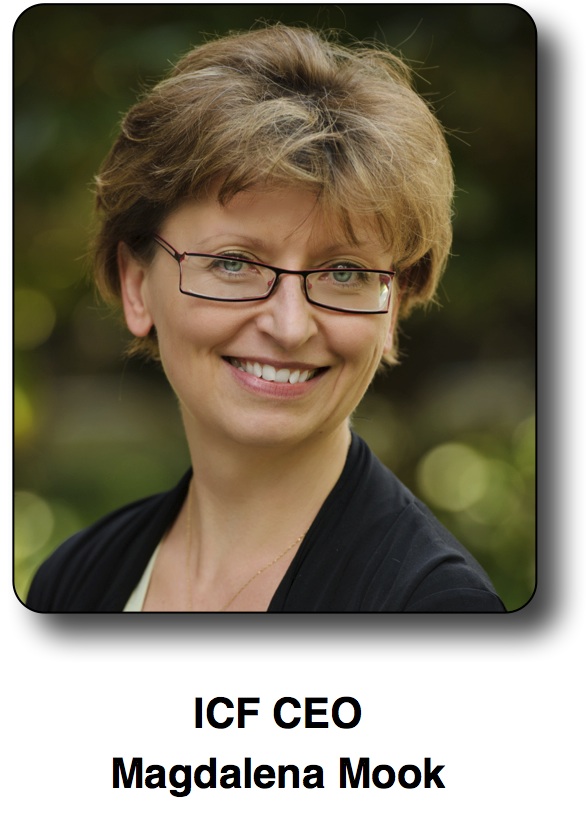Global Association Trends
More than 340 associations from over 20 different countries have participated in a groundbreaking survey, sharing how they are approaching globalization;
 Which countries are they targeting for future growth?
Which countries are they targeting for future growth? - Which products and services do they promote the most?
- Is globalization an opportunity, a threat, or a bit of both?
- What do faster growing associations do that others don't?
- Does having an international strategy make a difference?
The survey respondents were 60% Professional Societies, 28% Trade Associations, Federations represented 4% and the remainder were a combination of charities, coalition groups or certification and credentialing bodies.
Respondents came from more than 20 countries:
- Belgium
- Canada
- China
 Switzerland
Switzerland- Columbia
- Germany
- France
- UK
- Hong Kong
- Ireland
- Isle of Man
- Italy
- India
- Netherlands
- Norway
- Philippines
- Slovenia
- South Africa
- Spain
- Sweden
- USA
How do U.S. and  European Associations Compare?
European Associations Compare?
For the first time ever, we are able to compare U.S. based organizations with their European counterparts. Recent European and international association data allow us to compare the similarities, and draw insights from how associations in different regions face globalization.
(More than 70 associations from Europe took part, in addition to contributions from Africa, Asia and Latin America.)
European associations are far more likely to be part of a European Federation and they represent a higher percentage of trade associations as compared to organizations based in the U.S. This reflects the history of associations in Europe as having been primarily national organizations that were part of a European federation. The trend however is for more pan-European associations which are expected to replace, in part, the traditional role of the pan-European federations.
The survey results show another dramatic difference; European associations are far more international in general, with many more of them reporting at least 50% international membership.

European and U.S. associations share a great deal of similarities in terms of where they have their members today. We can also see that European associations are looking to grow in many of the same regions as U.S. based associations are, including expansion from Europe into the U.S. and into mainland China.

U.S. based associations, however, are much more focused than European organizations on growing in Latin America and Central Asia / India while European associations are more likely to grow in Africa than those from the U.S.
The data seems to indicate that U.S. associations are more likely in general than their European counterparts to look at international expansion for their future growth opportunities.
What is the difference between associations that grow faster internationally vs. those that don't?
One of the most important and interesting insights we wanted to get at from this survey was to understand what is the difference between the fast growing international associations, and those organizations that do not enjoy the same level of growth?
In the survey, we asked participants to identify if their international membership was growing slower, as fast as, or faster than their overall membership rates. We also asked participants to declare what percentage of their current membership is international. The categories were a.) less than 5%, between 5%-14%, between 15%-24%, 25%-49% and at least 50% or more.
We then compared the results of the "fast growing" associations with the other organizations in the survey. The answer we got is what we might expect, but also, it was far clearer than we imagined. The more international an organization already was, the more likey it was experiencing a higher level of international growth.
In fact, associations that had at least 15% or more international membership were 56% more likely to experience faster international growth than other associations!

While we cannot state that just having a higher percentage of international members will guarantee faster growth, the data is clear; those associations with at least 15% international members are far more likely to experience faster overall growth.
Challenges
We asked survey participants to list the different challenges they faced as they attempt to grow globally. The result is a list of the most common obstacles that almost every international association must address in one form or another. Your organization will have a specific set of challenges that will differ depending on your specific sector, how international you already are, your resources, your capabilities and how many competitors you face.

The two most common challenges listed include a.) defining appropriate business models and b.) accurately assessing the real potential of international markets. What experience and the survey results tell us is that the business model that has made you successful in your home market is probably not going to look like the business model you will need to succeed in other countries.
International growth strategies require a well thought out plan and market research to determine which markets hold real opportunity versus those that hold false promise. Associations are unique, each representing a specific industry or profession, and each faces a unique set of competitors, challenges and constraints. It requires serious thought and effort to develop a coordinated plan that addresses each of these challenges.
Does having an International Strategy make a difference?
Common sense tells us that associations should be more effective and successful if they have a solid strategy and an implementation plan.
Most associations start with an an "ad hoc" approach to international growth. It is usually not until it reaches a critical point and demands attention that a dedicated international strategy is developed. How much more successful could an association be if it had a solid strategy and business plan for global growth?
Fortunately, we have data that gives us an answer.
We asked respondents if they had an international strategic plan and if it was being implemented. We then compared the results of the faster growing associations with those that reported average or slower growth.

The faster growing associations were almost 50% more likely to have developed and implemented an international strategy compared to slow growth organizations. Of course, this is what we would expect, but for the first time we have real data from more than 340 associations and more than 20 countries that confirms having an international strategy makes a difference.
Over the past 4 years of global economic slowdown, emerging economy countries in Asia, Latin America, the Middle East and Africa have continued to prosper, typically growing at rates from 6-10% per annum. With the U.S. representing just 4.5% of the global population, it is clear that the real opportunities for significant growth are in international markets.
The data shows us that the associations that have the highest percentage of international membership are much more likely to continue to grow at a faster pace, making them much more resilient when economic conditions change.
Conclusion
Having an international growth strategy makes a difference.
 GLOBALSTRAT has helped hundreds of organizations to develop a professional Global Growth Strategy. We have also trained hundreds of association professionals through our highly effective Global Growth Strategy workshops.
GLOBALSTRAT has helped hundreds of organizations to develop a professional Global Growth Strategy. We have also trained hundreds of association professionals through our highly effective Global Growth Strategy workshops.
Feel free to contact us directly if you would like more information, including how we can help you develop a growth strategy for your association.
Terrance Barkan CAE - tbarkan@globalstrat.org







